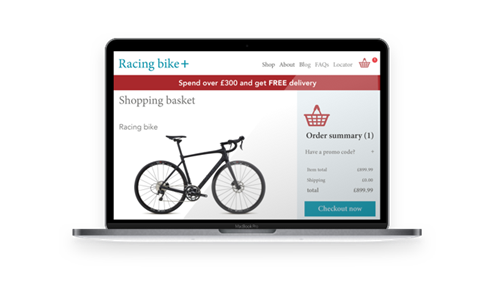It can be tricky in a crowded marketplace to distinguish yourself and grab consumer attention, but there are tools at your disposal to give you an advantage, and one of these is your mission statement.
In this guide we’ll take a deep dive into the world of mission statements, explain what they’re all about and the value they offer, plus how you can craft a top-notch one in four simple steps.
What is a mission statement?
A mission statement is a simple statement explaining your business’ goals, summarising what you do for your customers and employees and in some cases, yourself as the owner too.
It’s a declaration of what makes your business important, outlining what you’ve set out to achieve, which in turn directs the actions of your employees and attracts consumers.
Mission statements can be super succinct like this one from IKEA:
“Our vision is to create a better everyday life for the many people.”
Or much broader like this one from Apple:
“Apple revolutionized personal technology with the introduction of the Macintosh in 1984. Today, Apple leads the world in innovation with iPhone, iPad, Mac, Apple Watch, and Apple TV. Apple’s four software platforms—iOS, macOS, watchOS, and tvOS—provide seamless experiences across all Apple devices and empower people with breakthrough services including the App Store, Apple Music, Apple Pay, and iCloud. Apple’s more than 100,000 employees are dedicated to making the best products on earth, and to leaving the world better than we found it..”
Do I need a mission statement?
There’s no hard and fast rule dictating every business must have a mission statement, but it’s certainly a good idea because a good one will:
- Give your business focus
- Serve as a framework
- Set your business apart from the competition
For consumers on the hunt for their next purchase, a mission statement will tell them everything they need to know about your business in a clear and concise way.
What should a mission statement achieve?
A good mission statement should accomplish two things, answering these questions:
- Why does your business exist? This could be to provide fresh food, home furnishings, quality craftsmanship - essentially summarising what your business does.
- What makes you different? Do you source all your products locally? Are you environmentally friendly? Do you support local charities? What sets you apart?
There’s a fine line to be drawn in a mission statement between being too blunt and generic, and over-hyping your business’ capabilities.
So for example, if you’re actively environmentally friendly, saying “we do our bit for the environment” doesn’t make your business sound exciting, but equally claiming “we want to make the world a better place” is likely a tad optimistic.
Instead something like “we’re committed to leaving [location] greener than we found it” strikes a healthy balance.
Key elements of a mission statement
There are four important elements to consider when crafting your mission statement:
- Value - What value can you offer your customers?
- Inspiration - Why should a job-seeker want to work for you?
- Plausibility - Don’t over-egg the pudding - it needs to sound believable.
- Specificity - Tie the statement back to your
How to write a mission statement
1. What makes your business special?
Define the ‘why to buy’, i.e. what makes your business different and why should a customer choose to buy from you? Step one involves identifying the good your business does.
For example, if you’re a cafe owner what makes you different? Do you source all your ingredients locally? Are you inexpensive? Do you give back to your local community? Are you a plastic-free establishment?
Again, don’t make claims that are wildly exaggerated, you don’t need to be saving the planet to be doing good or to be distinguishable to your customers.
2. What do you do for your employees?
Not all businesses include the employee element in their public mission statement, but it’s good practice to do so because ultimately attracting the best workforce you can is going to bolster your business’ success.
So, step two involves defining what your business does for your employees.
Do you provide training? Is your business built on equality and diversity? What’s your company culture like? Consider including these things in your mission statement, like this example from American Express:
“We have a mission to be the world’s most respected service brand. To do this, we have established a culture that supports our team members, so they can provide exceptional service to our customers.”
3. What does your business do for you, the business owner?
It’s not common to see a mission statement include this step as they’re generally outward-facing aimed at customers and workers, but some experts argue it’s an important aspect so we’ll cover it briefly.
What is the mission of business ownership? It’s safe to assume there’s a financial element involved, but perhaps you want a happy work environment or to have an impact on the community too. Did you set out to provide better quality produce to your community?
If it makes sense for you and your business, include it.
4. Edit & refine
It’s time to make your mission statement as polished and digestible as possible, so go back over your statement as defined in points one, two, and possibly three, and chop it down to be less wordy.
Once you’re happy with what you’ve come up with, get as much feedback as you can by showing it to:
- Your workforce
- A sample of your target audience
- Friends and family
Or anyone who’s willing to provide candid feedback. Keep your eyes out for any buzzwords that you might find in any other mission statement but don’t necessarily apply to your specific business such as ‘unique’, and ‘world-class’.
Review and revise your statement as needed based on the feedback you receive, and remember, a mission statement isn’t written in stone - if your business outgrows it or elements of it are no longer accurate, go back and adapt it to keep it current.
Top tips for creating an impactful mission statement
- Keep it short and sweet - a few sentences should do it.
- Think long-term - keep your statement open enough to reflect your long-term goals, for example, if you plan to expand into new areas, don’t say “based in [location]”.
- Don’t limit yourself - if you sell women’s clothes now but hope to branch out into menswear too, don’t restrict yourself with your statement.
- Test it - your mission statement should distinguish your business from the crowd, so consider testing it on an audience by showing them three statements for similar businesses and asking them to pick yours out. If they can’t consider tweaking.
Last but not least don’t forget to share the final product publicly! Your mission statement should set you apart from the crowd, so put it out there for all the world to see.
Examples
We’ll leave you with a few more examples of business mission statements to inspire and set the cogs in motion.
McDonald’s
“Our aim is to provide a fun and safe environment where our customers can enjoy good food made with quality ingredients at affordable prices.”
Sainsbury’s
“To be the consumer's first choice for food, delivering products of outstanding quality and great service at a competitive cost through working 'faster, simpler and together.”
Specsavers
“Together with our partners, to passionately provide best value optometry, audiology and other healthcare services to everybody, simply, clearly and consistently, exceeding customer expectations every time.”
Wetherspoons
“Our aims are to have by far the best CQSMA [cleanliness, quality, service, maintenance and atmosphere] standards in the pub world, to be the best company to work for and, by doing these things, to be the most profitable.”
Urban Outfitters
“A lifestyle retailer dedicated to inspiring customers through a unique combination of product, creativity and cultural understanding. Founded in 1970 in a small space across the street from the University of Pennsylvania, Urban Outfitters now operates over 200 stores in the United States, Canada, and Europe, offering experiential retail environments and a well-curated mix of women’s, men’s, accessories and home product assortments.”
For heaps more useful resources for small businesses head to our choc a bloc blog.





